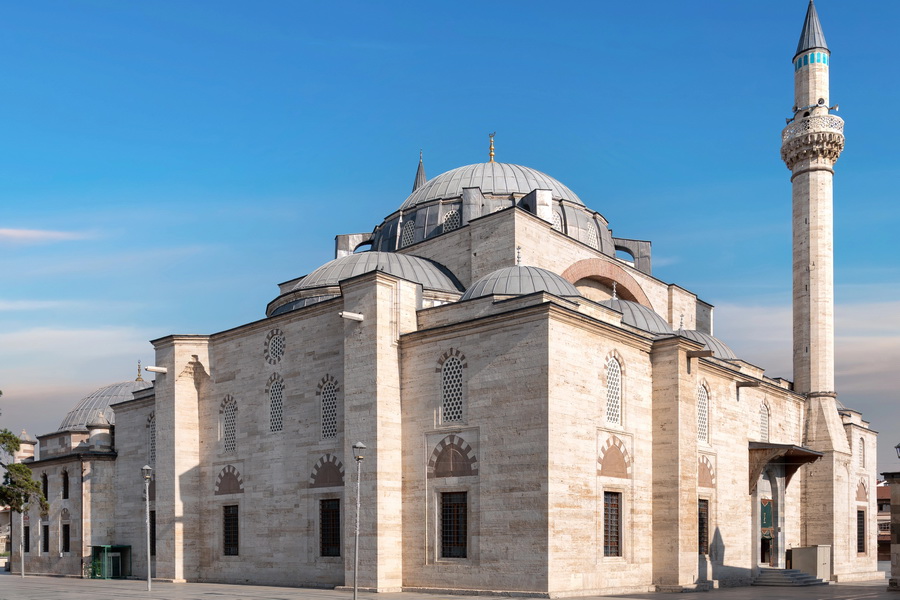
The most popular thing to do in Konya, Central Anatolia, is to visit the Mevlana Museum. In fact, it ranks among the most visited museums in Türkiye. Every year, thousands of people come here to honour the tomb of the great Sufi teacher, Rumi. That is why Konya is an important religious tourism destination for Sufis seeking mental and spiritual relaxation. On the other hand, foreign visitors flock to Konya in the framework of cultural tours in Turkey to learn about the foundations of its spiritual path.
As the capital of the Sultanate of Rum (1077-1308), many of the top things to do in Konya trace back to its Seljuk past. Numerous mosques and madrasas from that period display the finest examples of Seljuk architecture. But its historic appeal runs even deeper: travellers to Konya will find notable ancient ruins and monuments harkening back to prehistoric times – the Çatalhöyük Mound, recognised as a UNESCO site (United Nations Educational, Scientific, and Cultural Organisation).
Konya also boasts natural and scenic wealth ideal for day trips, such as Meram Vineyards (Meram Bağları), Lake Tuz, and Lake Beyşehir. Finally, visitors can sample authentic cuisine rooted in the Seljuk and Ottoman culinary traditions in local restaurants.
Best 26 Things to See and Do in Konya
Even three days in Konya won’t be enough to see everything inside and outside this city. Yet we have created 1-, 2-, and 3-day itineraries so you can choose what fits your schedule. This guide has mapped out the top 26 Konya attractions, connecting Neolithic ruins, volcanic lakes, Seljuk caravanserais, nature escapes, and traditional eateries.
- Mevlana Museum
- Alaeddin Hill Park and Mosque
- Çatalhöyük Mound
- Ince Minaret Medrese
- Karatay Madrasa
- Sille Subaşı
- Church of Agia Eleni
- Panorama Konya Museum
- Konya Archaeological Museum
- Aziziye Mosque
- The Mosque and Tomb of Shams Tabrīzī
- Konya Ethnography Museum
- Konya Selimiye Mosque
- Konya Bedesten Bazaar
- Konya Shopping Centres
Mevlana Museum (Mevlânâ Müzesi)

Experience the Konya Mystic Tradition
This is the most visited landmark in Konya, the final resting place of the 13th-century Sufi poet and mystic Rumi (Jalāl al-Dīn Muḥammad Rūmī). The striking green dome, Kubbe-i-Hadra, was restored in summer 2025. Inside, guests will find manuscripts, relics of the Mevlevi order, and an ongoing conservation project of Rumi’s sacred robes. The Mevlana Museum open hours are from 9am to 6:30pm (from 10am on Mondays), and admission is free.
Alaeddin Hill Park and Alaeddin Mosque
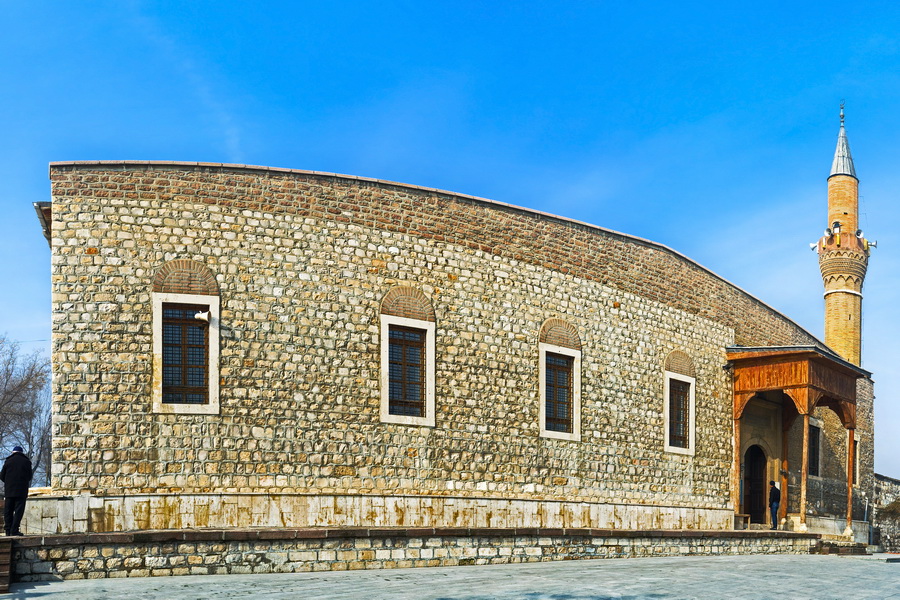
Climb a Historic Hill Without Breaking a Sweat
Alaeddin Hill Park (Alaaddin Tepesi Parkı) is a favourite spot for locals to relax and home to the most important Konya sights – the Alaeddin Mosque and the tombs of several Seljuk Sultans.
The mosque’s construction began in 1155 under Mesud I (Rukn al-Dīn Mesud Klada ibn Kilij Arslan) and was completed in 1220 by Sultan Kayqubad I (Alā' ad-Dīn Kayqubād ibn-e Kayihura), after whom the mosque is named.
Don't be misled by the word "hill" – it is a gentle rise and not a strenuous climb at all. A ten-minute walk from Mevlana Square (Mevlana Meydanı) along Alaeddin Street will bring you to its thresholds.
Çatalhöyük UNESCO Site Near Konya
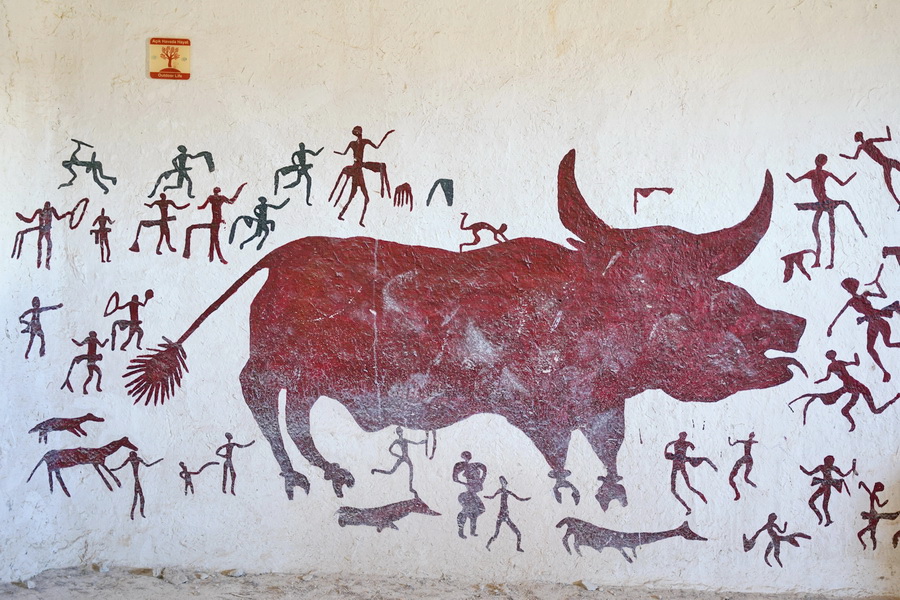
Dive into the Neolithic Era
Even if you are not passionate about history or archaeological sites, the Çatalhöyük Mound is still worth a visit. Recognised as a UNESCO World Heritage Site in 2012, it transports visitors back thousands of years. For just five euros, interactive exhibits bring the past to life, with explanations in both Turkish and English. Recently, Science magazine even suggested that this prehistoric community may have been organised as a matriarchy.
The easiest way to reach Çatalhöyük is by car. Alternatively, head to the Karatay Bus Terminal (Karatay Otobüs Terminali), take a dolmuş to the village of Çumra, and from there, the site is “a wheel’s throw away” by taxi.
The prehistoric settlement is open daily from 9am to 6pm. And if you’re planning a broader journey across Türkiye, combining a visit here with the top things to do in Konya makes for an itinerary rich in ancient and Ottoman history.
İnce Minareli Medrese
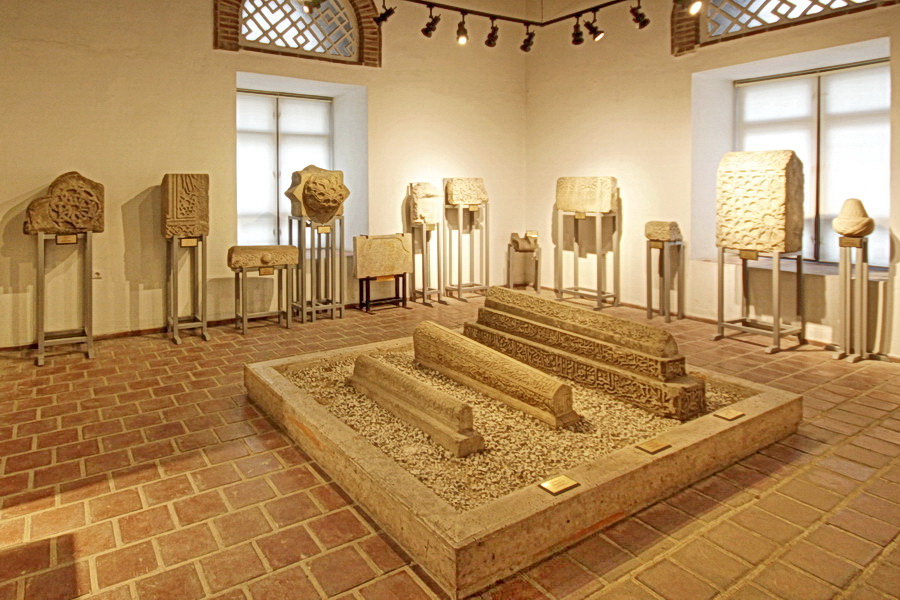
Admire the Seljuk Masterpiece with Its Slender Minaret
Known in Ottoman times as the Darülhadis (“sacred tradition” school), the Ince Minaret Medrese was commissioned between 1258 and 1279 by the Seljuk vizier Sâhib Ata under Sultan Kayqubad III to study the Hadith.
Situated in the Beyhekim neighbourhood, just west of Alaeddin Hill, this Konya historical site adds depth to the city’s identity with its architecture and ornate portal. The inscription credits the architect Kölük bin Abdullah, whose design brought together a soaring minaret, a central courtyard, iwans, and intricate tilework. It is currently used as the Museum of Stone and Woodwork (Taş ve Ahşap Eserleri Müzesi).
Karatay Madrasa
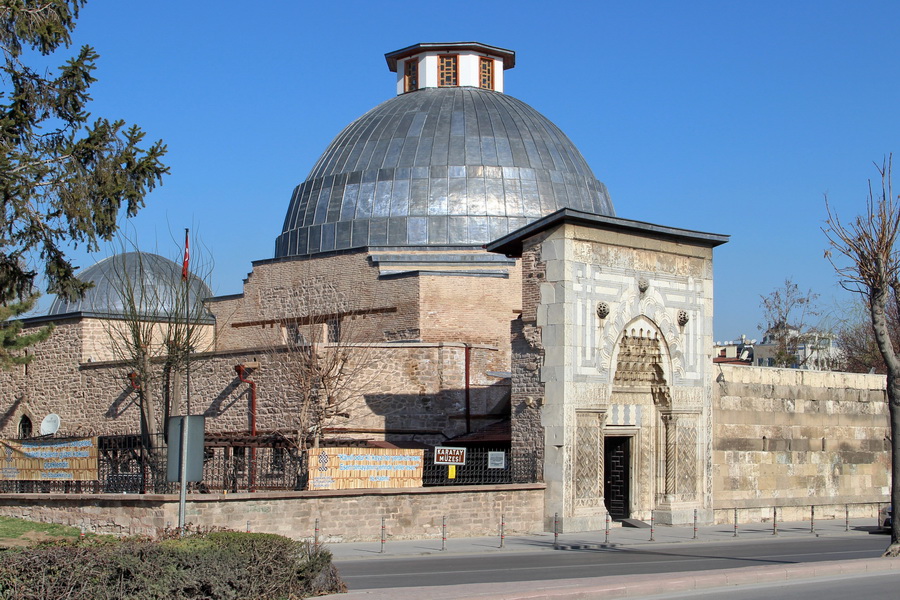
Discover Vibrant Patterns and Colours of the Seljuk Tiles
Another remarkable building of the Seljuk era is the Karatay Madrasa (Karatay Medresesi). It was constructed in 1251 by the vizier Jalal al-Din Qaratay. The building’s highlight is a marble entrance portal. The madrasa has been transformed into the tile works museum, showcasing dazzling objects of Anatolian ceramic art, including the Seljuk tile from the 13th century.
Sille Subaşı
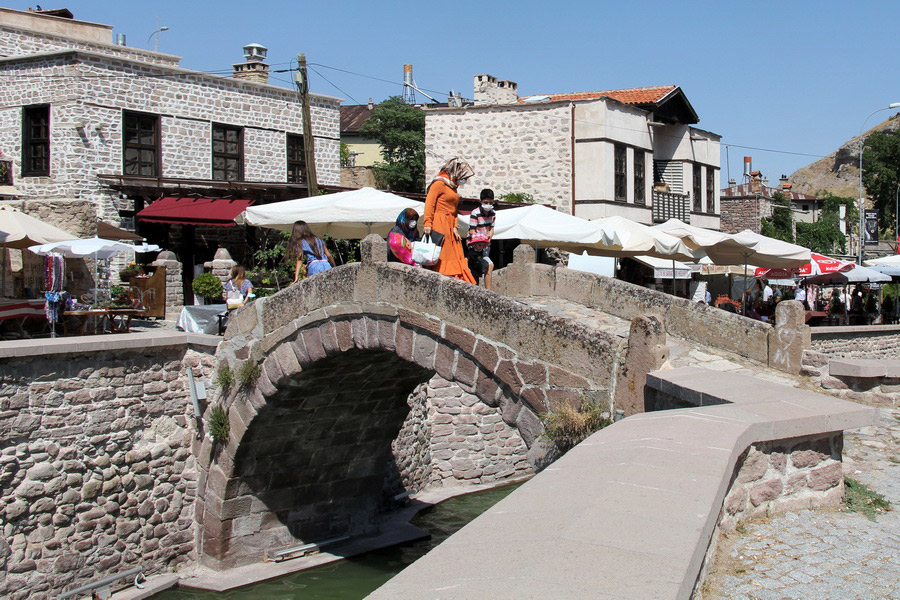
Plan a Short Trip from Konya to a Village Full of Surprises
Among the places to visit near Konya is Sille or Sille Subaşı, a neighbourhood of Konya, 8 kilometres from the city centre. A small river runs through the historic settlement, dividing it into halves with cafés, restaurants, and souvenir boutiques. Sille attracts with its rich architecture and friendly atmosphere. There are places to visit, such as Hagia Eleni Church (Aya Eleni Kilisesi), Sille Caybasi Mosque (Sille Çay Cami), Sille Cave (Sille Mağaraları), Devil’s Bridge (Şeytan Köprüsü), and Sille Museum (Sille Müzesi).
Travellers should consider adding the village to their list of things to do in Konya in winter, when its streets and landmarks take on a magical allure.
Church of Agia Eleni
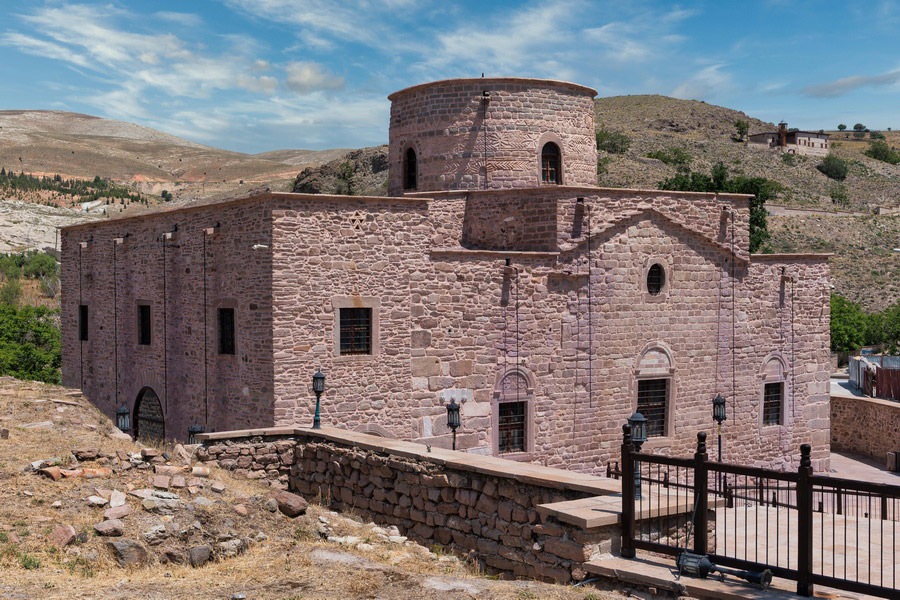
Visit Konya’s Oldest Christian Landmarks
Turkey is a fascinating country for religious tourism. And the Church of Agia Eleni (today functioning as Hagia Eleni Museum) is a must-see Konya attraction in Sille for pilgrims and anyone curious about the Greek-Orthodox culture. It is believed that Helena, the mother of Emperor Constantine I (306-337 AD), laid the foundation of this church in 327 AD during her journey to Jerusalem with a stop near Konya.
Panorama Konya Museum
Get Fully Immersed in the 13th-Century Scene
Panorama Konya Museum (Panorama Konya Müzesi) is one of the unique Konya spots. Within its rotundas, spectators encounter vivid art installations – paintings, wax figures, and miniature mosques – that recreate the life of Rumi and his disciples with increasing realism. Outside, the museum continues the story with miniature props depicting the city's neighbourhoods. And there is a nice café that sometimes hosts live music.
Konya Archaeological Museum
Explore Ancient Treasure for Free in the City Centre
The Konya Archaeological Museum (Konya Arkeoloji Müzesi) is a small but distinguished venue, often recommended for top Konya sights. And here is why. Despite its modest size, the museum houses impressive Neolithic, Bronze, and Iron Age collections. Newcomers can admire household items, jewellery, artefacts linked to Assyrian trade colonies, and Phrygian and Urartian cultures. At the same time, it is home to the Hercules sarcophagus, unearthed in the village of Yunuslar in Beyşehir Province. Best of all, entry to this remarkable museum is completely free.
Aziziye Mosque
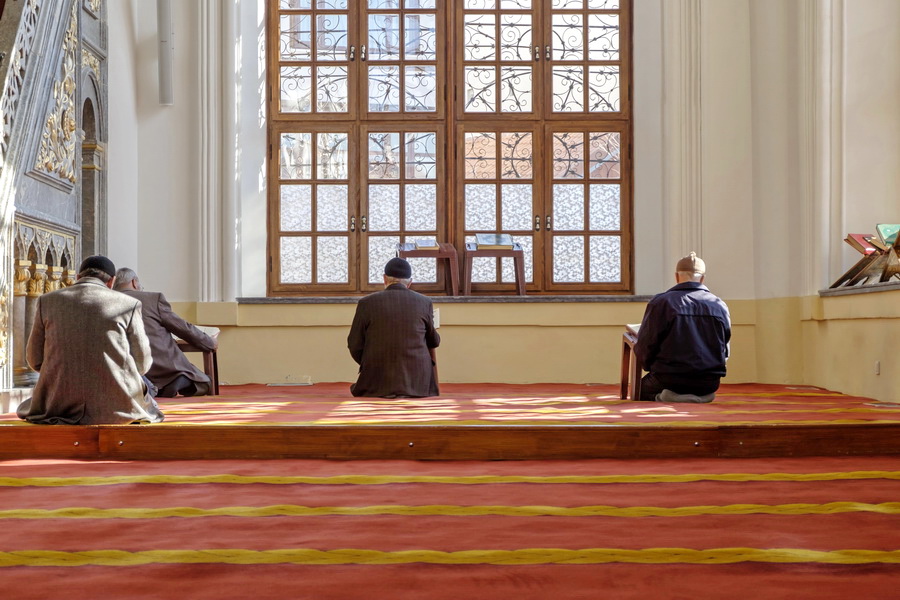
See the Minaret That Has a Columned Balcony
This Mosque is so unlike others that you might not even realise it is a place of Muslim worship at first glance. That makes the Aziziye Mosque (Aziziye Camii) a true hidden gem in Konya. Its architecture blends traditional Ottoman style with the mid-19th-century neoclassical elements.
The Mosque and Tomb of Shams Tabrīzī
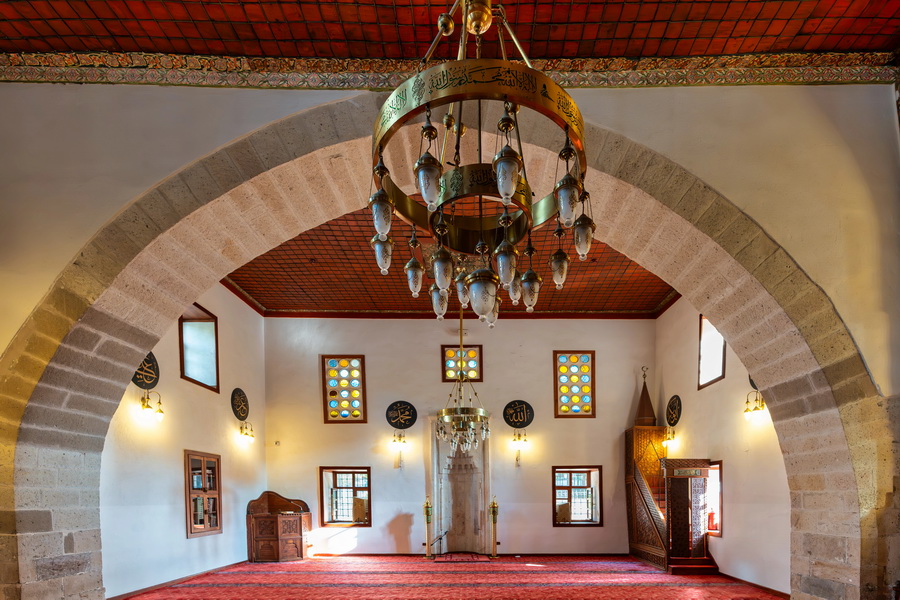
Reflect in the Tranquil Tomb of Rumi’s Mentor
There is no shortage of religious sites in Konya, and the Mosque and Tomb of Shams Tabrizi is among them. Locals believe this is the resting place of Shams-i Tabrīzī (1185–1248), the spiritual teacher of Mewlānā. It is a serene spot where you can sit quietly and reflect.
Konya Ethnography Museum
Learn About the Traditions of Konya in Just 30 Minutes
When it comes to cultural tours in Konya, the Ethnography Museum (Konya Etnografya Müzesi) is a worthwhile stop. Although small, it can be perused in about 30 minutes, and entry is free. Here, you will connect with the city’s traditions through displays of handmade carpets, folk costumes, jewellery, and household items from the Seljuk and Ottoman periods.
Konya Selimiye Mosque
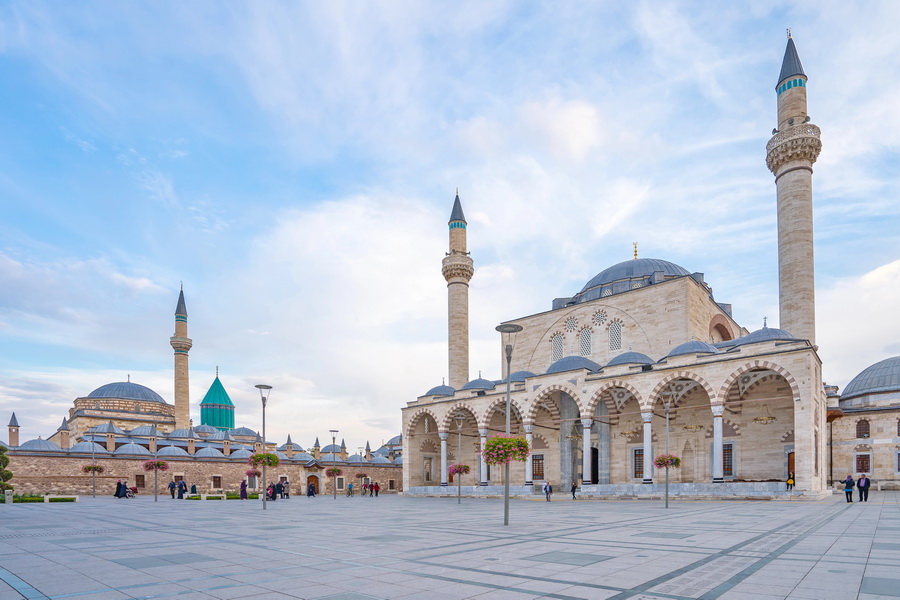
See the Copy of Istanbul’s Fatih Mosque
Built in the second half of the 16th century, the Selimiye Mosque (Selimiye Camii) is not the most visited monument, yet impossible to miss. Standing just southwest of the Mevlana Complex, these two landmarks in Konya belong to different eras of civilisations, but together they complement each other as symbols of Islamic architecture. Attached to the mosque’s southern wall is the Yusuf Ağa Library, connected to the building and representing the Islamic pursuit of science and knowledge.
Konya Bedesten Çarşı
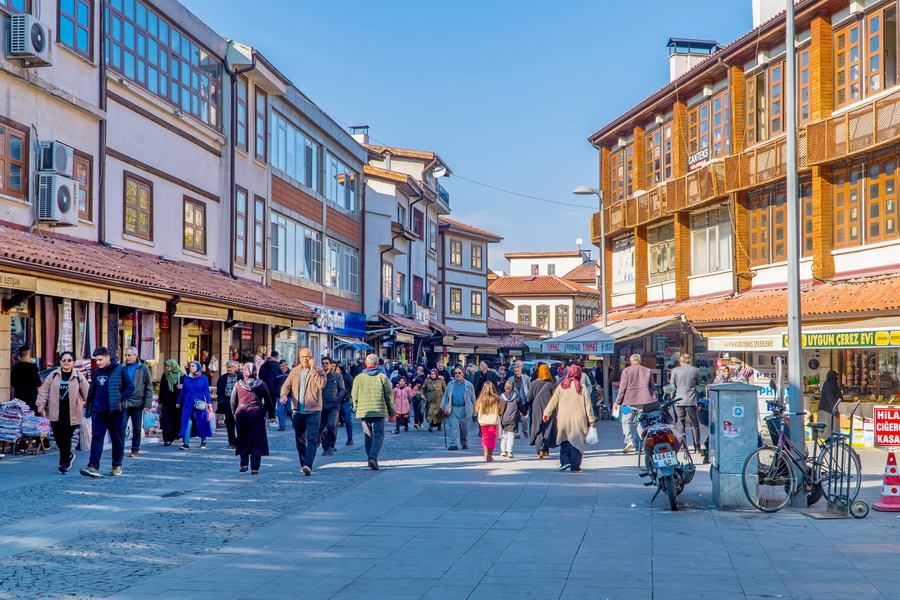
Shop for Traditional Souvenirs in Konya’s Historic Bazaar
Dating back to Ottoman times, the Bedesten Bazaar is the city’s oldest covered market and a favoured stop for shopping in Konya. Its narrow lanes are lined with stalls selling souvenirs, handicrafts, and traditional Turkish goods, from textiles and jewellery to spices. It is the place to take in the local spirit while picking up unique gifts to take home.
Kulesite and Kentplaza Shopping Centres
Spend Your Leisure at the Best Shopping Malls in Konya
Unlike the Bedesten Bazaar, a different world of Konya modern shops and international brands awaits visitors at the best shopping malls in Konya. These are Konya Kulesite Shopping Centre (AVM) and Konya Kentplaza AVM (Konya Kentplaza Alışveriş ve Yaşam Merkez) in downtown Selçuklu. They combine high-end clothing stores, dining options, and entertainment for adults and children. Moreover, Kulesite provides a sweeping panorama of the city. In addition, as the tallest skyscraper in Konya, it is as much of a landmark as it is a shopping destination.
Kapu Mosque
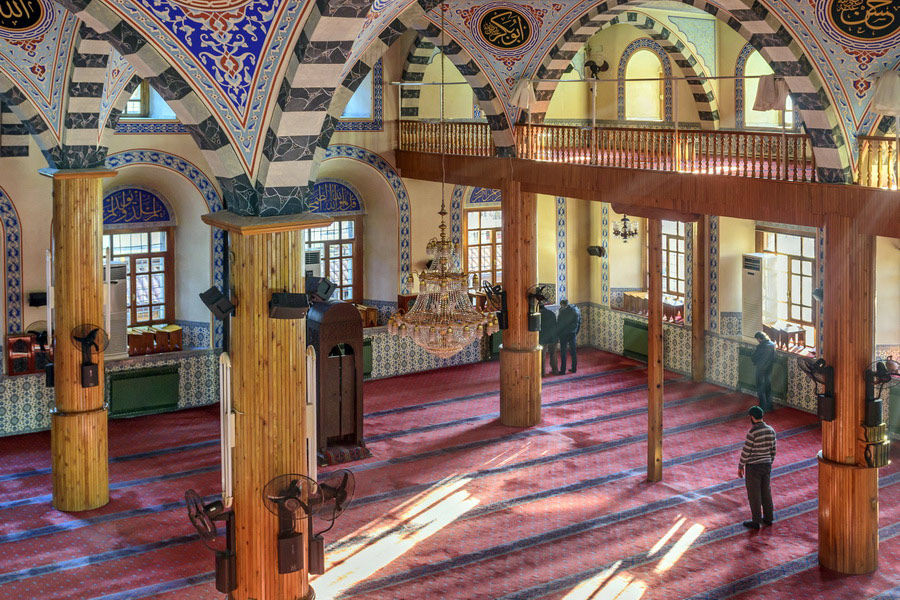
Add a Mosque Visit to Your Bazaar Stroll
Visiting this active mosque is something to add to your list of top things to do in Konya. It is located right within the historic bazaar. So why not step inside? Dating back to the 17th century, Kapu Mosque (Kapu Camii) demonstrates a remarkable interior, where blue-painted decorations, wood-style columns, and a soft blue carpet create a warm and welcoming aesthetic.
Konya Tropical Butterfly Garden
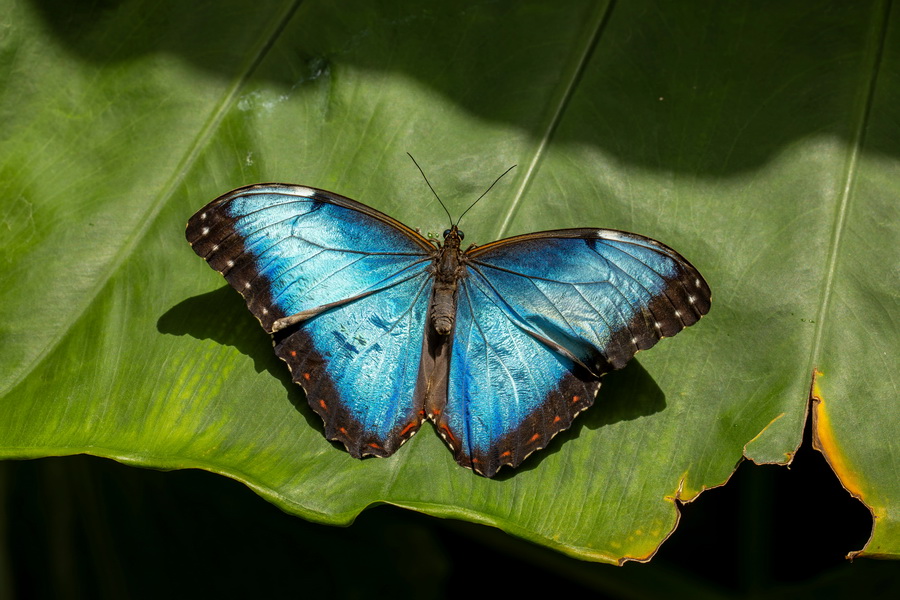
Head to the Most Unique Nature Sights in Konya
The Konya Tropical Butterfly Garden (Konya Tropikal Kelebek Bahçesi) is a living museum in the city's heart that has delighted visitors since 2015. Everywhere you look, life flutters, shimmers, and bursts with colour. According to the official website, the Konya Tropical Butterfly Garden price is just 400 Turkish lira. The garden is open Tuesday through Friday, from 9:30am to 5:30pm, and closed on Mondays.
Kyoto Japanese Park
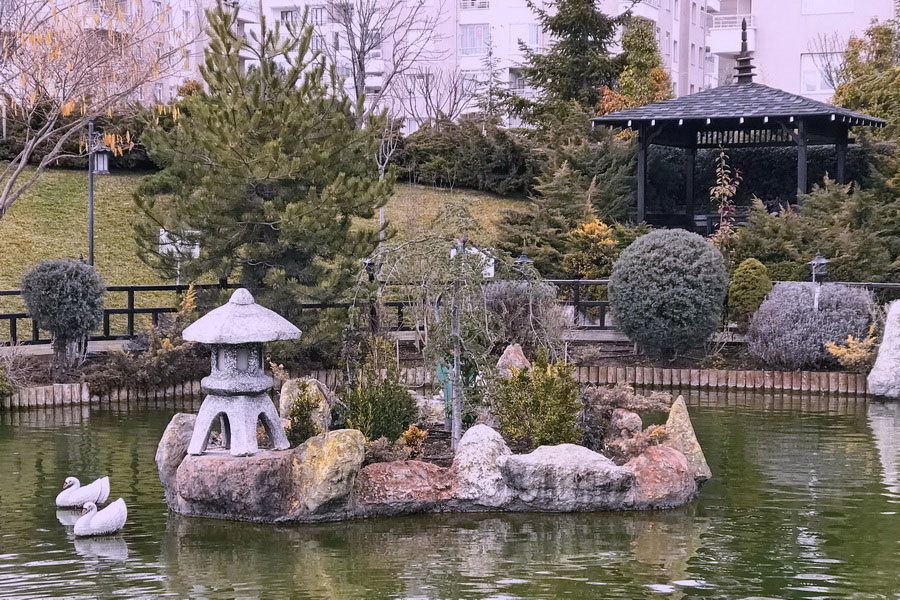
Unwind in a Peaceful Park
Kyoto Japanese Park (Japon Kyoto Parkı) is a truly atmospheric green space in Konya. Right at the entrance, there is a cosy café with affordable prices. The landscaping has been designed with attention to detail, creating the feeling that you have stepped into a small corner of Japan. Bonsai-style trees, colourful koi carp, and plenty of pavilions where you can bring your own food. Signs remind visitors not to feed the fish, but it is still a beloved spot for relaxing or taking photos. The park is small, but clean, peaceful, and charming.
Mevlana Cultural Centre
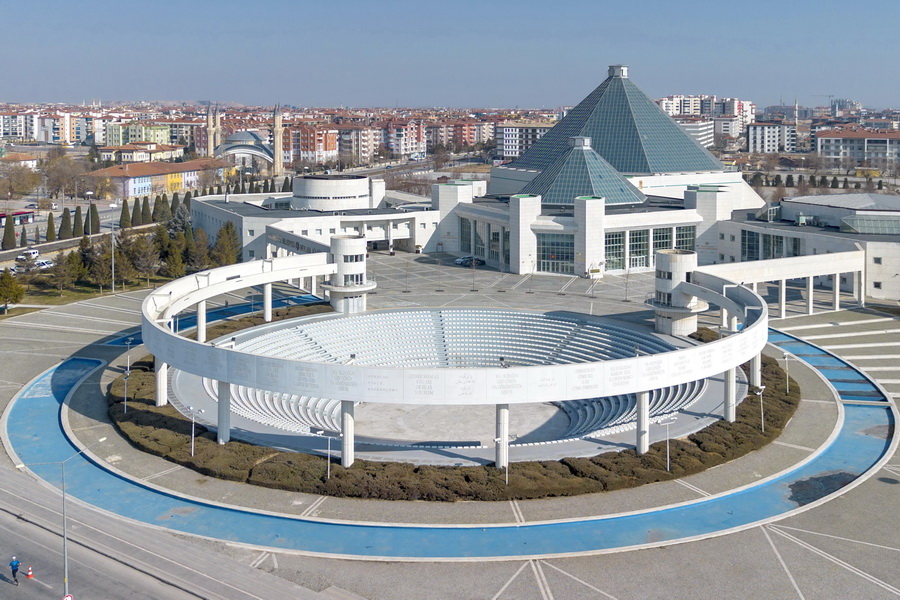
Listen to Konya Breath through the Sound of the Ney
The Mevlana Cultural Centre (Mevlâna Kültür Merkezi) is the best place to witness the spiritual art of the Sema ceremony – the whirling dance of the Mevlevi dervishes performed under the sound of the ney, the traditional reed flute of Turkish Sufi music. It is hard to imagine cultural tourism in Turkey without this hypnotic performance.
It is held every Saturday at 7:00 PM, except during Mevlana Week (December 7-17). In summer, the Sema takes place outdoors in the Mevlana Museum Garden on Thursdays.
Meram

Meram Attractions in Konya Beyond the City Centre
Konya has three main districts: Selçuklu, Karatay, and Meram. A 15-minute drive from downtown, the Meram Bağları (Meram Vineyards) is a destination locals seek for greenery, fresh air, and a relaxing retreat from the bustle of the city.
Some of the historic sites in Konya can be found in Meram. The one that stands out is the Kilistra Ancient City. Located 44 kilometres southwest of Konya, this archaeological site flourished during the Roman, Hellenistic, and Christian Periods. St. Paul is believed to have visited Kilistra (Lystra) several times on his missionary journey. The cut-rock dwellings and churches carved into the landscape evoke the fairy-tale scenery of Cappadocia.
Tulip Fields (Lale Tarlaları)
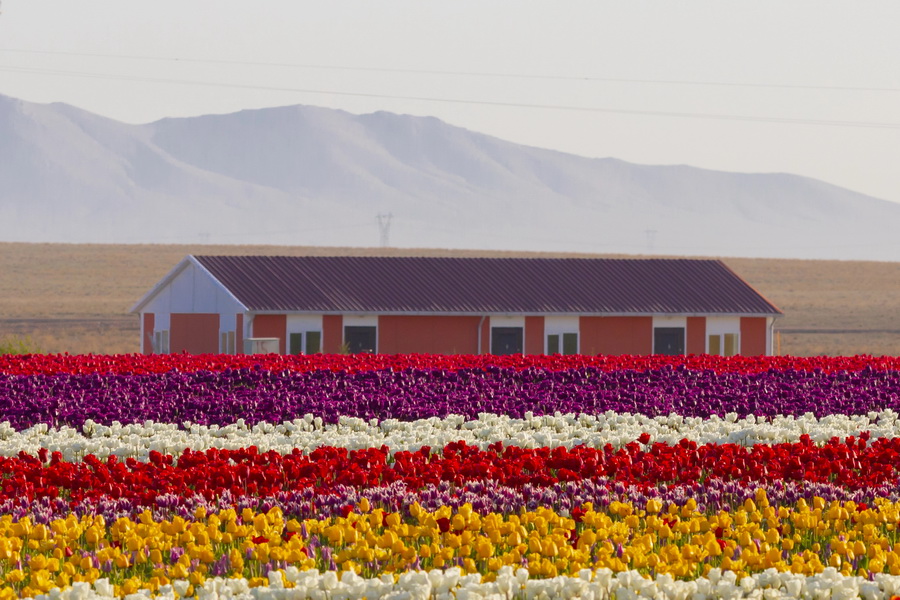
Smell Konya and Capture the Beauty of Its Tulip Fields
The surroundings of Konya are also famous for their tulip fields. If your Konya travel takes place in spring, typically from mid- to late-April, ask your tour operator to arrange a visit to these vibrant landscapes. They are the most photogenic Konya nature attractions. You can even find tulip gardens in Meram Vineyards, adding another layer of beauty to the area. The key is to time your visit to appreciate these seasonal blooms fully.
Beyşehir
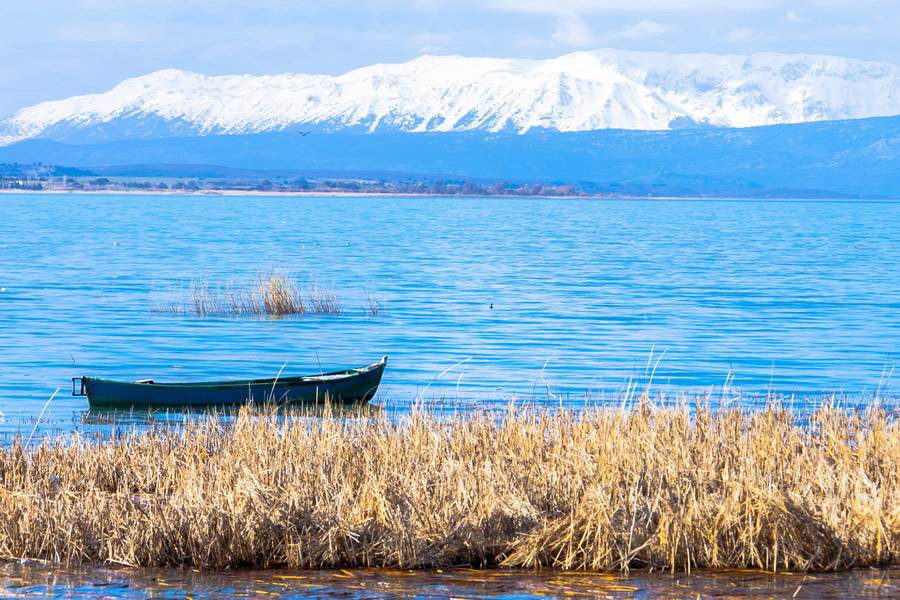
Embark on a Konya Cultural Day Tour
Just over an hour’s drive from Konya via the D330 Road, Beyşehir is an excellent stop for travellers looking for nature and history. For those seeking outdoor adventures, Lake Beyşehir (Beyşehir Gölü/locals affectionately call it the “Konya Sea”) affords plenty of options: hiking, biking, and even the Karaburun Beach (Karaburun Plajı). At the same time, the area is one of the best places to visit in Konya for cultural excursions, with Seljuk-era landmarks and ancient monuments.
Akşehir
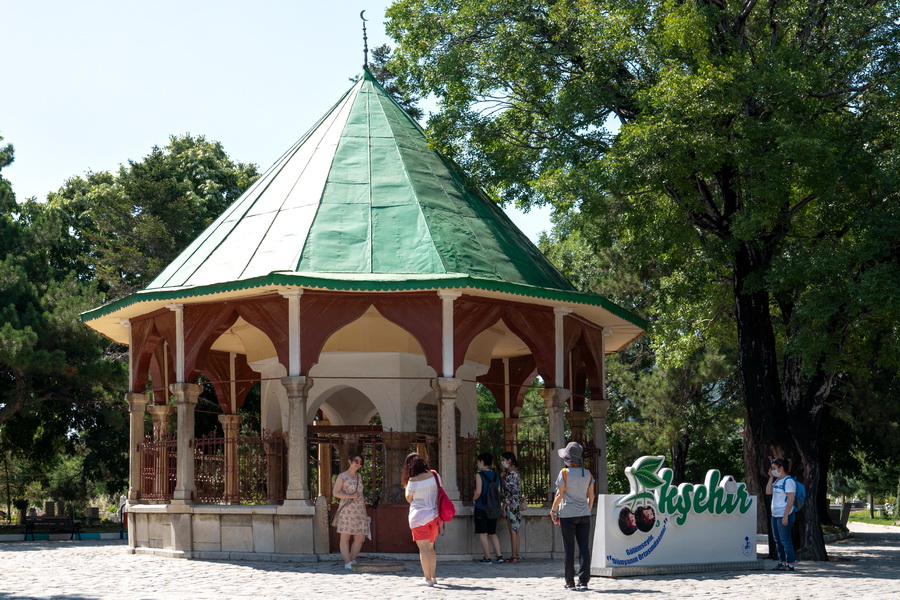
Another Worthwhile Stop on a Day Trip
Akşehir, about 135 kilometres from Konya via the D300 route, works for those who want to go beyond the city for day trips from Konya. The most interesting Konya attractions here are:
- Nasreddin Hodja Archaeology and Ethnography Museum (Nasreddin Hoca Arkeoloji Ve Etnoğrafya Müzesi) – dedicated to the beloved folk character and humourist of the Seljuk period.
- Lake Akşehir (Akşehir Gölü) – a peaceful nature spot for promenading, photography, and birdwatching, framed by the scenic Sultan Mountains.
- Western Front Headquarters Museum (Batı Cephesi Karargahı Müzesi) – the former command post where Atatürk directed preparations for the Great Offensive in 1921-1922.
Tuz Gölü (Lake Tuz)
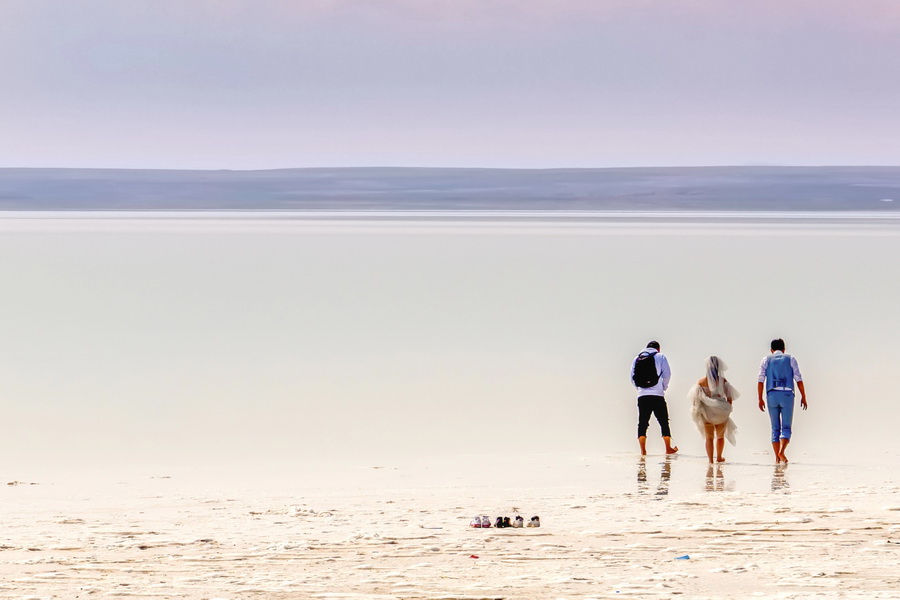
Watch Birds and Take Off Shoes to Feel the Salt Flats
Tuz Gölü, or Lake Salt, is the second largest lake in Turkey, following Lake Van. Its vast white surface creates a surreal landscape where visitors can walk barefoot across the salt flats and spot migratory birds, including flamingos. This iconic natural landmark in Konya is perfect for full-day excursions from not only Konya (105 kilometres away) but also Ankara, Cappadocia, and Aksaray.
There is no direct public transport from Konya to Lake Tuz, but you can take a bus to Cihanbeyli and continue the journey by local taxi or private vehicle.
Meke Gölü (Lake Meke)
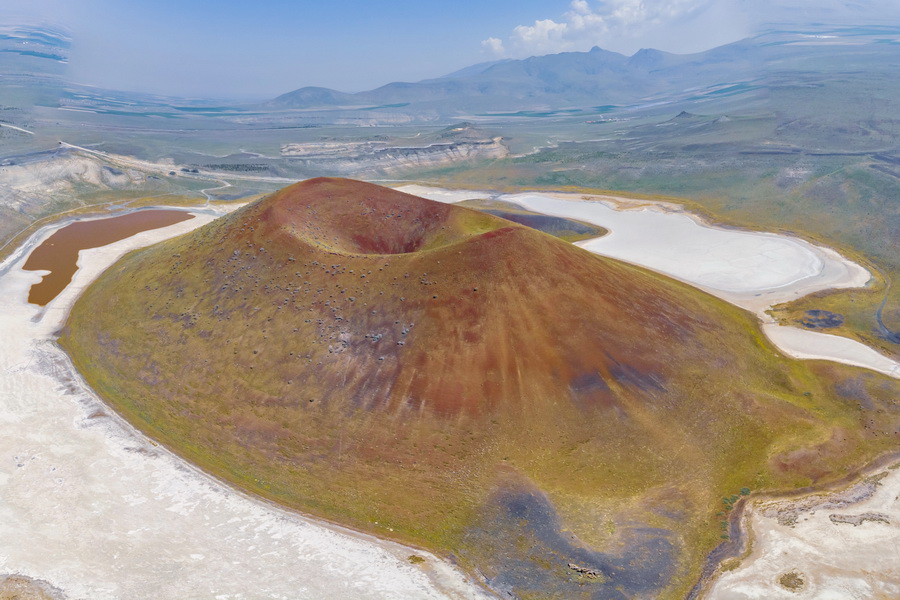
See the Volcanic Crater that Looks like a Miniature Planet
Situated about 95 kilometres southeast of Konya in the Karapınar district, Lake Meke is part of Türkiye’s most amazing natural monuments and a protected area. It is shaped like a closed loop with a volcanic cone rising in the centre.
The lake has steadily dried up in recent years for many reasons. Don't be surprised if you arrive to find a cracked salt basin – it is still hauntingly beautiful and unforgettable.
Ramadan in Konya
Spirituality in Full Bloom
Visitors arriving during Ramadan find Konya especially atmospheric, with nightly iftar gatherings, Sufi music, and spiritual energy flowing through Mevlana Square after sundown. Communal tarawih prayers and Sema performances take place across the city. Locals share meals, offer alms, and create a sense of unity and joy. Traditional dishes like etli ekmek, okra soup, and tahini pide are Konya’s Ramadan table staples. Don’t leave without Mevlana candy or witnessing a whirling dervish performance under the stars.
Top Things to Do in Konya in 1 Day
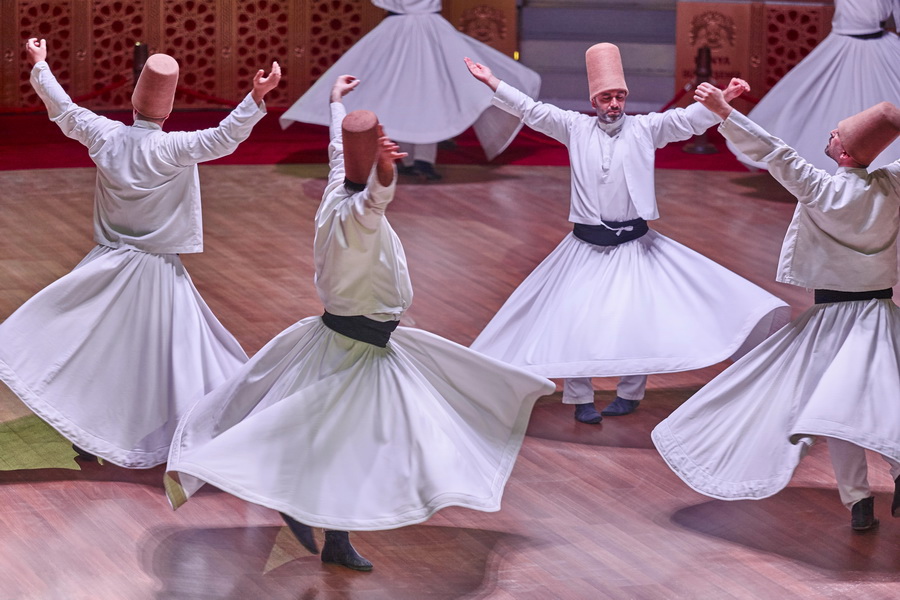
An incredible day in Konya should include visits to the Mevlana Museum, Karatay Medrese, Konya Archaeological Museum, and Bedesten Bazaar. Most of Konya's historic sites are within a short distance. If you are planning your trip around cultural experiences, Saturday is the best day to visit – it is the only day of the week when the famous Sufi whirling dervishes ceremony is held at the Mevlana Culture Centre. Here is a possible itinerary:
Morning:
Begin your day at Mevlana Square (Mevlana Meydanı). Spend an hour scrutinising the exhibits of the Mevlana Museum on Sufi philosophy and Ottoman spirituality. Right next door is the Selimiye Mosque, where you can admire Ottoman architecture before moving to your next stop.
Late Morning:
Saunter or take a short taxi to the Karatay Madrasa – one of the visual highlights of Konya. A few blocks away, visit the Konya Archaeological Museum, open Tuesday to Sunday, from 9am to 5pm.
Lunch:
Proceed to Osmanlı Döner near Alaeddin Hill Park. Their menu is popular with locals and includes döner kebab and tavuk dürüm (chicken wrap).
Afternoon:
Continue to the Bazaar Bedesten to wander the labyrinths of stalls and pick up something handcrafted before you leave.
Dinner:
Enjoy the authentic Konya meal at Halk Etliekmek Konya. Order the must-try etli ekmek bıçak arası. A flatbread topped with chopped meat that gives it a distinct texture and flavour. You can likewise try furun kebabi, a slow-cooked lamb in a stone oven. This very meal is even mentioned in Rumi's works. Wrap up the dinner with a bowl of bamya çorbası (okra soup), cooked in the Konya style.
Evening:
No Konya city excursion is complete without witnessing the spiritual performance that defines the city. Make your way to the Mevlana Culture Centre for the Sema ceremony.
If you happen to travel to Konya between December 7 and 17, you will experience Konya during the Şeb-i Arus Festival, commemorating the death of Rumi. He called it his “night of union” with the divine. During these 10 days, the city becomes a centre for Konya cultural tours filled with concerts, exhibitions, and spiritual gatherings. The main ceremony is held on December 17, an emotionally charged date that draws thousands to Konya from across the world.
2-Day Activities in Konya
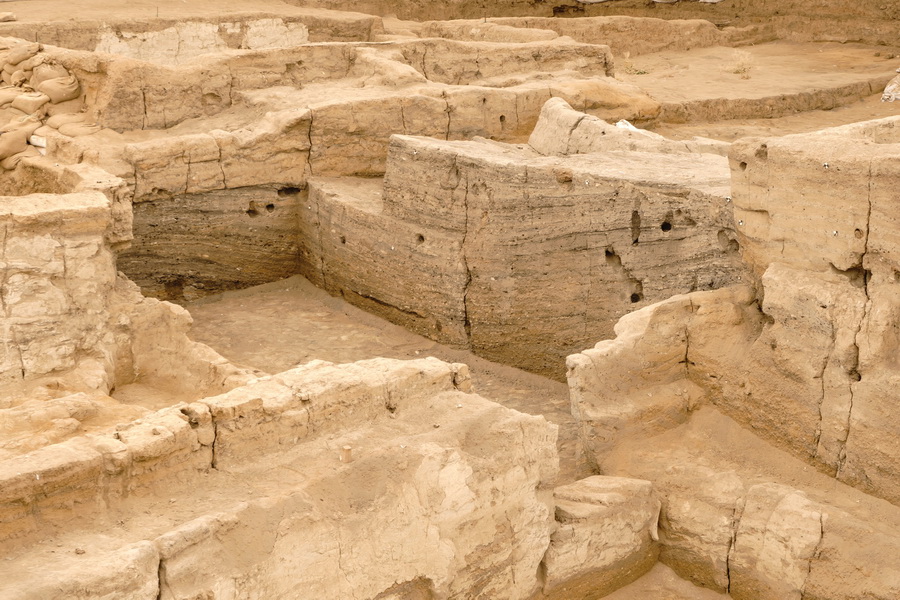
Two days in Konya allow visitors to surpass the city’s signature landmarks and uncover ancient history and rural charm. While the first day takes in the spiritual and architectural highlights of Konya, the second takes visitors to a lovely hillside village. This trip to Konya balances cultural depth with local colour.
Day 1: Follow the above-mentioned one-day itinerary for essential sights.
Day 2: Unveil Konya’s deeper stories, from Neolithic roots to hillside serenity.
Morning:
Start early and set out for a must-visit site in Konya – Çatalhöyük, 40 km southeast of Konya. Depending on traffic, it takes around 45-50 minutes to get there. Plan to spend at least 1.5 hours at the site. Begin with the Visitor Centre and continue to the excavation area to see the remains of densely packed mudbrick houses. A reconstruction section gives insight into early Anatolian communities' lifestyle, burial practices, and symbolic art.
- The site has little shade, so wear a hat and bring water, especially in warmer months.
While there is a small café nearby (Fera Coffee Çatalhöyük), it is not suitable for a full lunch.
Mid-day:
Return to the city centre for a proper meal. A convenient option is to revisit Osmanlı Döner or explore another eatery near Alaeddin Hill, where you will find traditional Konya cuisine in casual settings.
Afternoon:
After lunch, set off for Sille Village, 8 km northwest of Konya, about a 15–20-minute drive from the centre. Tucked in a quiet valley, Sille is a preserved Greek-Ottoman village. Stroll the cobbled streets and admire the stone façades of old homes. The Aya Elenia Church is at the heart of the village. All Sille landmarks are compact and walkable. Browse artisan shops, antique stalls, and bridges over the dry streambed.
Optional:
Stop by the Sille Time Museum of antique clocks, old radios, and other objects.
Before sunset, go to Sille Observation Hill (Sille Seyir Tepesi) for a panoramic view outside the city.
Evening:
Dine at Sille Konak Restaurant inside a converted stone house with terrace seating available in good weather. You will find meat dishes and regional mezes on their menu. The setting feels so antique and far removed from the city bustle – an exciting day to end your Konya journey on a relaxed note.
After dinner, return to your hotel in the city.
Spending 3 Days in Konya
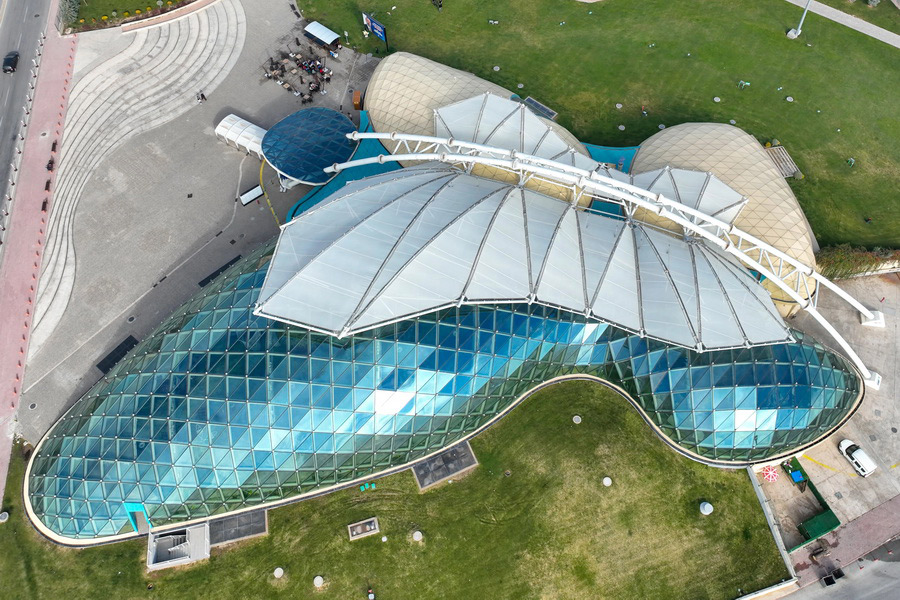
This Konya 3-day travel itinerary includes the top things to do on Day 1 and Day 2 in Konya, outlined in the previous sections. They embrace the top Konya attractions, including the Mevlana Museum, Alaeddin Hill, and the village of Sille.
On Day 3, you have two options: spend another day within the city or take a day trip beyond it to discover historic attractions.
Option 1: Stay in Konya – Nature, Culture, and History
- Start your day at the Konya Tropical Butterfly Garden.
- Drive back toward the city centre to visit the Panorama Konya Museum.
- Have lunch at Konya Sufi Restaurant near Mevlana Square. Sit at the upper terrace with a view of the Selimiye Mosque.
- Continue to the Mosque and Tomb of Shams Tabrizi.
- Visit the Stone Works Museum of Fine Minaret (İnce Minareli Medrese).
- End the day with a visit to the Aziziye Mosque.
- For dinner, consider Maruf Türbeönü Lokantas. Try their desserts – höşmerim (“cheese halva”) and rice pudding.
Option 2: Day Trip to Beyşehir
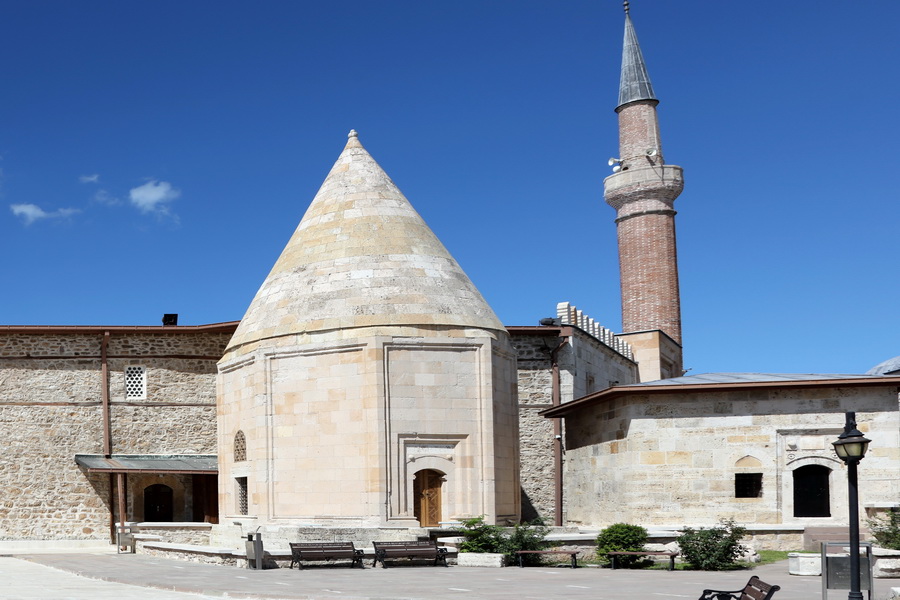
If you are up for a change of scenery, head to Beyşehir, located about an hour and ten minutes west of the city.
Here are the top things to see in Beyşehir:
- Lake Beyşehir National Park (Beyşehir Gölü Milli Parkı/established in 1993): A natural haven rich in flora, with opportunities for trekking, biking, and picnics.
- Kubadad Palace and Complex (Kubadad Sarayı): A significant Seljuk site closed for restoration.
- Fasıllar Monument (Fasıllar Anıtı): A large ancient stone statue of the Hittite Storm God.
- Eflatun Pınar Hittite Monument (Eflatun Pınar Hitit Anıtı): A sacred spring sanctuary dating back to the Hittite civilisation.
- Eşrefoğlu Mosque (Eşrefoğlu Camii): More than 700 years old, this mosque stands out for its heavy use of wood, creating an interior unlike any other Seljuk structure in Konya.
Bonus Cultural Stops for the Curious Traveller in Konya
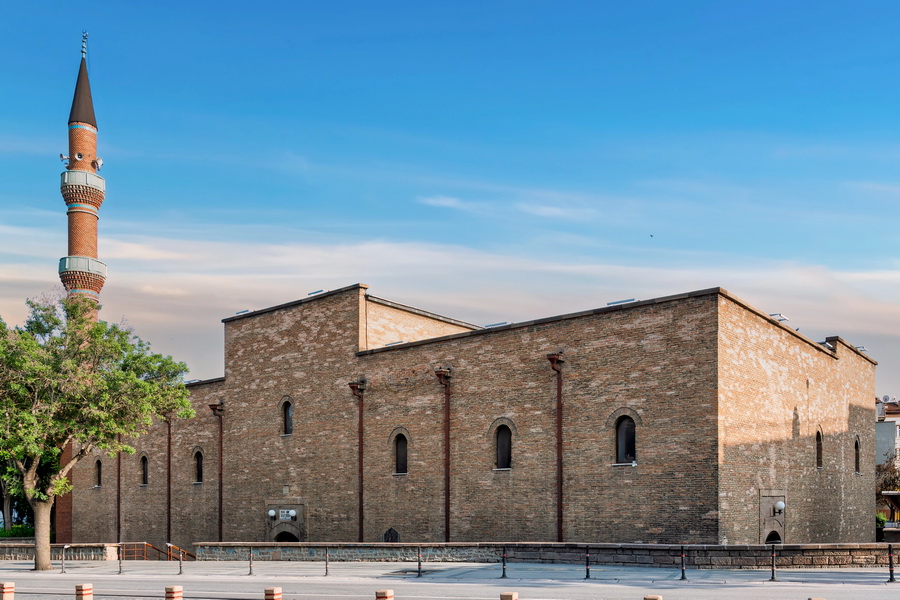
After exploring the top things to do in Konya, there is still more for those interested in cultural sightseeing. The following sites are lesser-known but rich in history and local character. They are true Konya hidden gems you can add to your itinerary:
- Sırçalı Medrese: Commissioned by Emir Bedrettin Muslih in 1242 to study Fiqh, this elegant madrasa features eye-catching Seljuk tilework. Currently closed for restoration.
- Sahip Ata Foundation Museum (Sahip Ata Vakıf Müzesi): Often missed by visitors, this museum near the Ethnography and Archaeology Museums displays tile, wood, and rug works, as well as swords, beads, and hand-written Qurans once part of a 13th-century complex with a mosque, madrasa, and hammam. Temporarily closed for renovations.
- Şerâfeddin Mosque (Şerafeddin Camii): Located across from Shams-I Tabrīzī's Tomb, this mosque was originally commissioned by Sheikh Şerâfeddin in the 12th century and later rebuilt in the 17th century. Currently closed for visitors.
- İplikçi Mosque (İplikçi Camii): A simple 13th-century mosque, east of Alaeddin Hill, often called the Ebülfazl Mosque.
- İzzet Koyunoğlu City Museum (Konya İzzet Koyunoğlu Şehir Müzesi): A vast private collection of archaeological and ethnographic objects donated to the city in the 11970s by local collector A. İzzet Koyunoğlu.
- Time Museum (Zaman Müzesi): Located in a village chapel in Sille, this unusual museum traces the evolution of timekeeping through clocks and exhibits.
- Konya Science Centre (Konya Bilim Merkezi): An interactive science museum with hands-on exhibits, spaceship props, educational films, labs, and games.
- Gevale Castle (Gevale Kalesi): A fortress with 800 years of history, 10 kilometres west of the city centre. Closed for archaeological work since 2012, but once open, it promises to be a unique stop near Konya.
- Atlıhan Kervansaray: A restored caravanserai along the D300 highway toward Beyşehir, now home to a small restaurant fitting for a cultural break on a road trip.
- Konya Martyrs’ Memorial Museum (Konya Şehitliği Müzesi): With free entrance, this graceful stone building commemorates the martyrs of the Turkish War of Independence and sits between the Mevlana Museum and Mevlana Culture Centre.
- Yusuf Ağa Library (Yusuf Ağa Kütüphanesi): Built in 1795 by Kethüda Yusuf Ağa, this research library near the Selimiye Mosque contains rare manuscripts, many now digitised for scholarly use.
- Konya Olympic Velodrome (Konya Olimpik Bisiklet Veledromu): The first Olympic-standard velodrome in Turkey to host international cycling events and competitions.
These secret corners offer an authentic view into the city’s past and present – a rewarding layer of Konya cultural sightseeing beyond the headline attractions.

